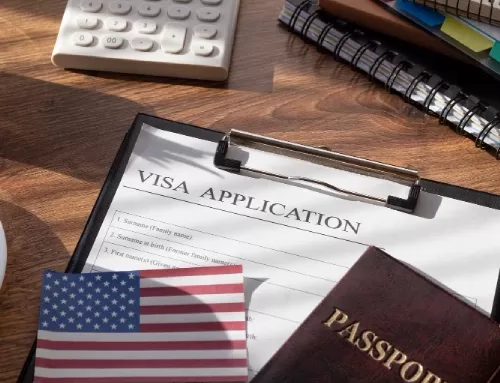Any individual who is not a United States Citizen but wishes to live in the country must apply to receive an immigrant visa. Obtaining an immigrant visa, like most immigration applications, is a process that takes time and consistency. The first step in this process would be to have an immediate family member petition for you. It is important to note that there are requirements that petitioners must meet, and who can file will depend on if the petitioner is a Citizen or Legal Permanent Resident (LPR). Immigration applications can often be challenging to navigate, so having an experienced immigration attorney on your side is crucial! At Rivera Law, we believe in uniting families and assisting individuals in navigating through their visa applications. Continue reading to understand more about the family preference categories and how they may affect your Visa application.
Family-based immigration visas (two types)
There are two types of family-based immigration visa forms. How the petitioner is related to the individual they are claiming will affect if they are eligible to be declared or not. The two types of forms are:
Immediate relative: An immediate relative is someone with direct familial relation to a United States Citizen, such as; a child, parent, or spouse. When petitioning for an immediate relative, there is no limit on the number of individuals that can be claimed. For example, a United States Citizen can petition for all of their children and their spouse at the same time. NOTE: If an adult-child wishes to petition for their parent, they must be at least 21 years of age.
Family preference: Unlike the immediate relatives, a family-preference visa form is for family members who are not considered immediate relatives. There is also a limit on the number of individuals who qualify under this category. The subparts under this category are as follows:
- First (F1) – The son or daughter of a United States Citizen who is NOT married and is twenty-one years of age or older.
- Second (F2A) – The spouse or child of a Lawful Permanent Resident (LPR) who is NOT married and under twenty-one.
- Second (F2B) – The spouse or child of a Lawful Permanent Resident (LPR) who is NOT married and is twenty-one years of age or older.
- Third (F3) – The son or daughter of a United States Citizen who IS married; AND
- Fourth (F4) – The son or daughter of a United States Citizen who IS married and is twenty-one years of age or older.
Adjustment of status eligibility
If you are already in the United States and are married to a United States Citizen or LPR or a family member has filed a petition for you, you may be eligible to “adjust your status” to a permanent resident in the United States. To meet the requirements, you must first:
- File and pay for the accurate applications.
- Be legally admitted into the United States through a point of entry.
- Be in the United States physically at the time of application.
- Be considered ‘eligible’ to receive a Visa, meaning there are no restrictions on your application that will prevent you from being approved.
- Have “immigrant visa” available under your filing category, as well as at the time that the immigration office decides on your application.
- Still have a family relationship with the family member who filed a petition for you.
- Be considered ‘admissible’ to the U.S. for an LPR.
When it comes to immigration challenges, you don’t have to do it alone! Rivera Law is on your side to help make your goals become a reality. Call our office at 561-651-9322 OR visit our website today.







Leave A Comment
You must be logged in to post a comment.